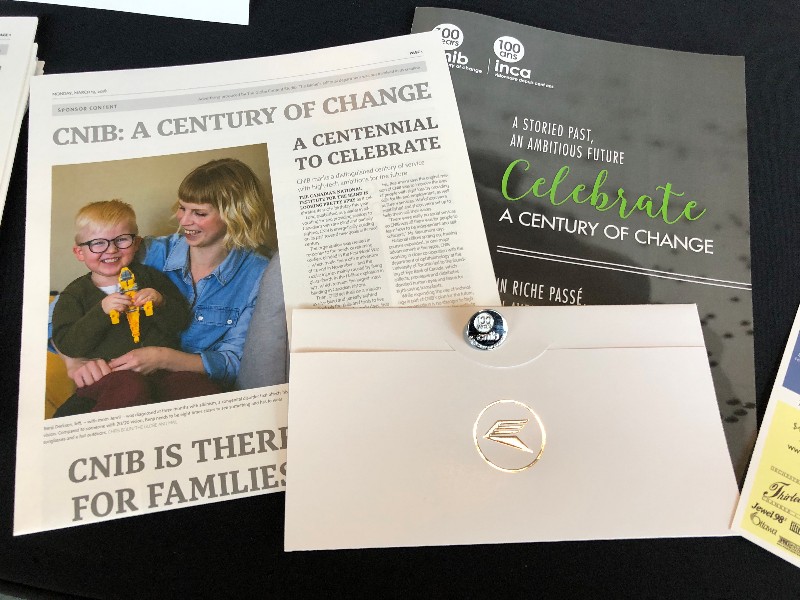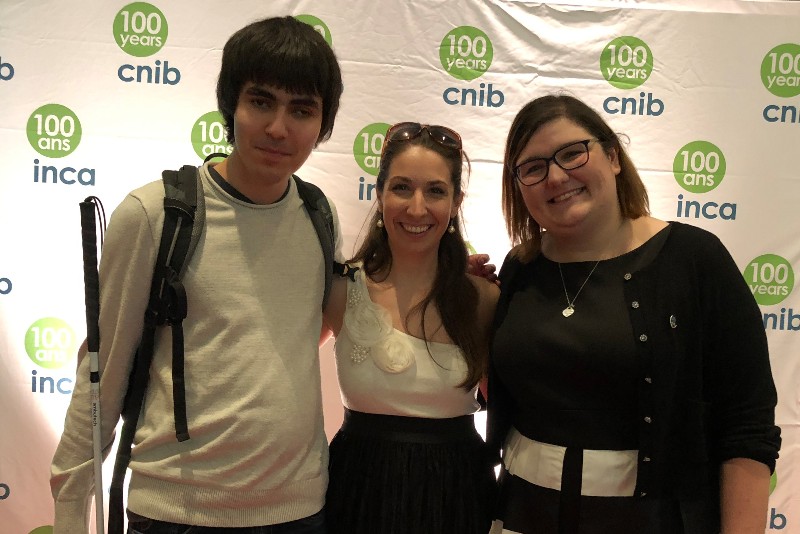One hundred years ago, when the Canadian National Institute for the Blind was founded, blind citizens in this country were not allowed to vote. This basic right was only achieved in 1930.
Today, Carla Qualtrough, a federal cabinet minister with visual impairments since birth, congratulated CNIB on its centennial celebration from the stage at the Canadian War Museum.
A remembrance of the past and a vision for the future were the prevailing themes at this week’s 100th anniversary celebration. Hosted by media legend Craig Oliver, the evening also featured remarks from the Kirsty Duncan, the federal minister of science and the minister of sport and persons with disabilities, along with several senior CNIB executives.
OBJ360 (Sponsored)

Ottawa’s growth is at an inflection point
One thing the Welch LLP Business Growth Survey taught us this year is most of the business community thinks we’re on track, but have a ways to go.

Game on! How Ottawa REDBLACKS business experiences create meaningful connections
An Ottawa REDBLACKS game may be the only place a business leader should leave their game face at the door.
Many volunteers, donors and employees were honoured for their achievements. The event that reminded more than 500 attendees just how far CNIB has come since it was founded shortly after the First World War, back in a time when for many blindness meant poverty and discrimination.
“An organization like ours will never forget our past,” said CNIB president and CEO John Rafferty, who is spearheading dozens of similar events across Canada this year to commemorate the 100th year.
“It is the foundation on which we stand today. The future is about technology and inclusion, and in some ways imaging what Canada would need to look like for CNIB to not to exist.”
In other words, the work is far from over for the hundreds of thousands of Canadians living with blindness or visual impairment.

Moving forward, he identifies the two top priorities for CNIB: boosting employment for blind and visually impaired Canadians, and getting new technologies in their hands to improve quality of life.
Jim Sanders, 71, is one of those individuals whose life has been changed by technology.
Born in Fort William, Ont., in 1947, he remembers working with CNIB from the very beginning. He was born with just 10 per cent eyesight capacity at birth, and then became completely blind about 35 years ago.
“One thing hasn’t changed – that’s getting through the initial stages of sight loss,” Sanders said. “What has changed, is that 20 years ago I managed five per cent of the information that came in my mailbox or across my desk. I manage 95 per cent now. That is the biggest change. Computers and other devices have been a game-changer.”
Text-reading software for smartphones, wearable devices that offer text-to-speech in one’s ear and a belt clip that uses ultrasound to detect obstacles in the user’s path are just some of the new technologies that allow the blind to live a better life.
Armed with new technology, CNIB has never felt more optimistic about the future. Rafferty said these innovations and improved social integration of Canada’s blind and visually impaired will go hand-in-hand as CNIB works toward its next centennial.
“I won’t try to predict that they country will look like another years from now,” Rafferty added. “Given where we have come from, I can’t even imagine where we will be 10 years from now.”
– By Jeff Todd











